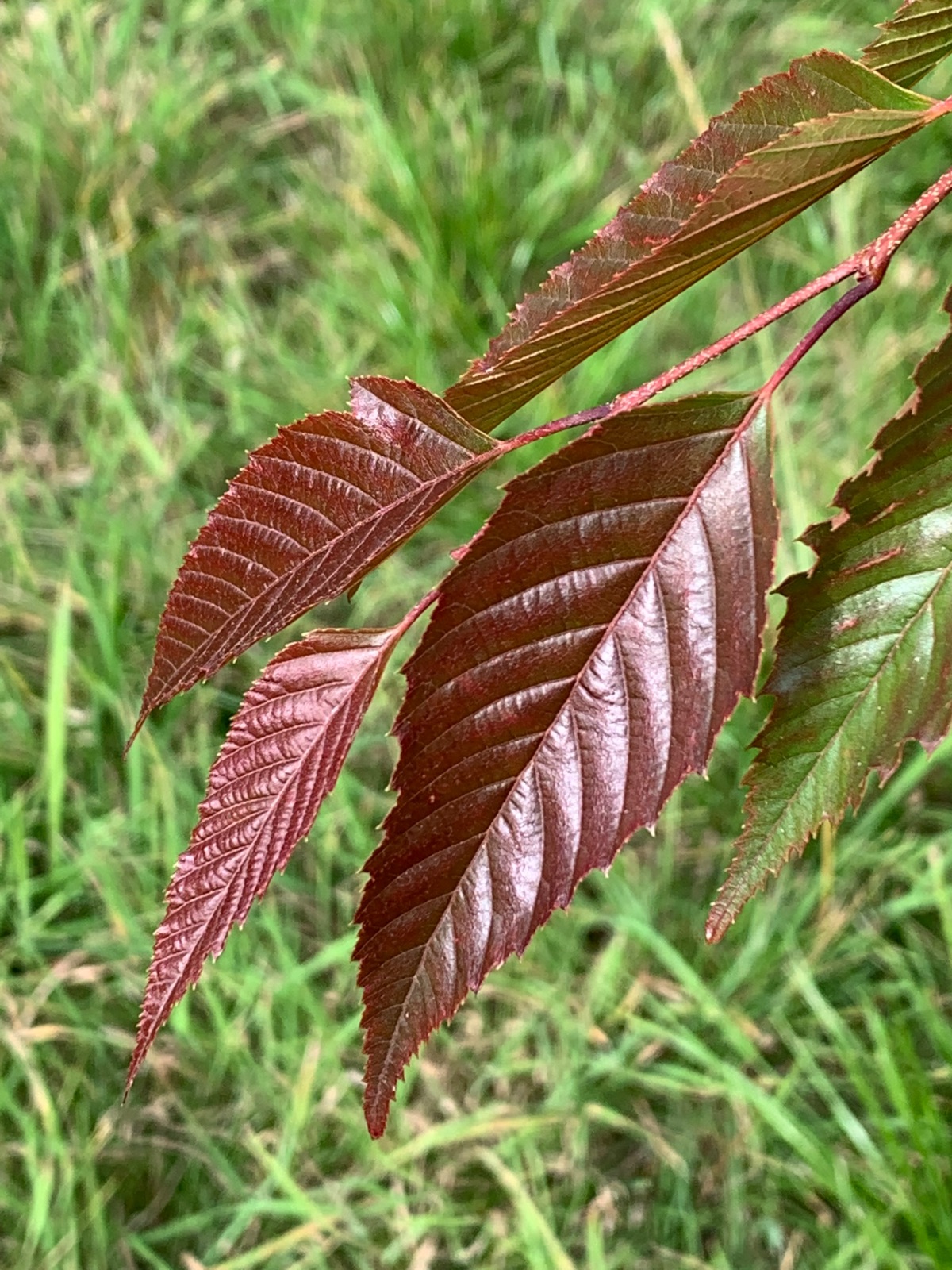Carpinus polyneura
Sponsor
Kindly sponsored by
Lord and Lady Aldington
Credits
Owen Johnson (2022)
Recommended citation
Johnson, O. (2022), 'Carpinus polyneura' from the website Trees and Shrubs Online (treesandshrubsonline.
Genus
Synonyms
- Carpinus handelii Rehder
- Carpinus turczaninovii var. polyneura (Franch.) H. Winkl.
Other taxa in genus
- Carpinus betulus
- Carpinus caroliniana
- Carpinus cordata
- Carpinus faginea
- Carpinus fangiana
- Carpinus fargesiana
- Carpinus hebestroma
- Carpinus henryana
- Carpinus japonica
- Carpinus kawakamii
- Carpinus laxiflora
- Carpinus londoniana
- Carpinus mollicoma
- Carpinus monbeigiana
- Carpinus omeiensis
- Carpinus orientalis
- Carpinus pubescens
- Carpinus rankanensis
- Carpinus × schuschaensis
- Carpinus shensiensis
- Carpinus tropicalis
- Carpinus tschonoskii
- Carpinus turczaninovii
- Carpinus viminea
Tree to 15 m. Bark grey, rather smooth. Twigs purple, glabrous or with some silky hairs. Leaves elliptic, oblong or more often tending to lanceolate, 4–8 × 1.5–2.5 cm; upper surface with dense pubescence along the midrib, lower surface hairy along the veins and with axillary tufts; lateral veins in 16–20 parallel pairs, impressed; margins regularly double-serrate, teeth with mucronate tips; petiole sparsely pubescent or glabrous, 5–10 mm or sometimes considerably longer. Fruiting catkins 3–6 cm long, the peduncle c. 2 cm long, slender and sparsely pubescent. Fruit-bracts narrowly D-shaped, the curved side remotely dentate, the straight side entire but with a small auricle at the base which clasps the nutlet. Nutlet sparsely pubescent, ribbed. (Li & Skvortsov 1999).
Distribution China Fujian, N Guangdong, Guizhou, Hubei, Hunan, Jiangxi, Shaanxi, NE Sichuan (Chengkou Xian), Zhejiang
Habitat Mountain forests or thickets, 400–2300 m asl.
USDA Hardiness Zone 7
RHS Hardiness Rating H5
Conservation status Least concern (LC)
Carpinus polyneura is the first named hornbeam, and by far the most widespread, in a group which also includes (among the species cultivated in the west) C. mollicoma and C. omeiensis. Genetic analysis is not yet reliably able to differentiate these entities (Dong et al. 2022), and separating them by macroscopic features is certainly an imprecise art. It seems likely that this group of taxa will be subject to taxonomic upheaval sooner or later. For now, C. polyneura – as its name suggests – tends to have rather numerous lateral veins to its neatly-pleated leaves; only the ‘false hornbeams’ in Section Distegocarpus have many more. But some plants grown in Europe as C. omeiensis seem to agree better with C. polyneura, while others grown as C. polyneura have much longer leaf-stalks than occur in the wild, at least according to the Flora of China (Li & Skvortsov 1999). The example at Lime Close in Oxfordshire, illustrated above/below, is one such tree: the foliage itself is thus easily confused with that of C. viminea (De Langhe 2022), but C. viminea is rather distantly related within the genus and has three-lobed fruit-bracts, and often distinctively long and jaggedly-toothed ‘tails’ to its leaves. C. polyneura has also been confused with C. fargesiana var. ovalifolia (Grimshaw & Bayton 2009), a taxon whose leaves generally have fewer pairs of side-veins and which belongs within a large Chinese group of very close allies of C. turczaninovii (Dong et al. 2022).
Most gardeners will probably not be bothered by such nuances of identification, so long as the plant is a pretty one. Carpinus polyneura shares the graceful habit of many Asiatic hornbeams, with its often weeping shoots; its delicate leaves flush with a red or purplish colour and can sometimes turn rich green very abruptly. The taxon is now offered by at least five nurseries in the UK (Royal Horticultural Society 2020), and by several in France and the Netherlands.
A specimen of C. fargesiana var. ovalifolia introduced to Kew in 1889 (q.v.) was for a long time considered to belong to C. polyneura, but authentic examples only seem to have been grown in the west since the early 1980s, when seed was sent by the Shanghai Botanical Garden (Rushforth 1985). The trees now in the UK are all younger than this, and have grown rather slowly. The tallest, in the shelter of the hornbeam collection at Kew and grown from Shanghai Botanical Garden seed in 1992, was 8 m tall in 2022, while one in Keith Rushforth’s woodland arboretum in Devon, received from seed collected by the Royal Botanic Garden Edinburgh in 1991, was 7 m tall in 2013 (Tree Register 2022).
A plant from this same source has also survived at Dawyck, one of the coldest big gardens in the UK. A more surprising record is from the species list, hosted by the Royal Botanic Garden Edinburgh (Royal Botanic Garden Edinburgh 2022), for the Denver Botanic Gardens in Colorada (USDA hardiness zone 5b–6a), where its chances of long-term survival are surely slim. Like most plants from the mountains of southern China, Carpinus polyneura also expects plenty of rainfall through the growing season.





